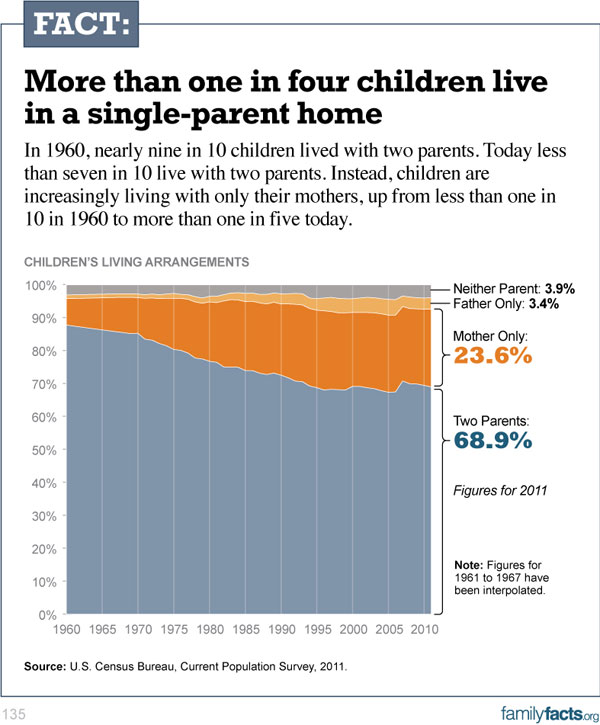NYT
WASHINGTON — The decline of two-parent households may be a significant reason for the divergent fortunes of male workers, whose earnings generally declined in recent decades, and female workers, whose earnings generally increased, a prominent labor economist argues in a new survey of existing research.
David H. Autor, a professor at the Massachusetts Institute of Technology, says that the difference between men and women, at least in part, may have roots in childhood. Only 63 percent of children lived in a household with two parents in 2010, down from 82 percent in 1970. The single parents raising the rest of those children are predominantly female. And there is growing evidence that sons raised by single mothers “appear to fare particularly poorly,” Professor Autor wrote in an analysis for Third Way, a center-left policy research organization.
In this telling, the economic struggles of male workers are both a cause and an effect of the breakdown of traditional households. Men who are less successful are less attractive as partners, so some women are choosing to raise children by themselves, in turn often producing sons who are less successful and attractive as partners.
Girls enter school with a lead on boys, and schools then fail to close the gaps. Instead, they increase. The behavioral advantage that girls have over boys in kindergarten, based on teachers’ assessments of their students, are even larger in fifth grade.
By then, the average girl is at the 60th percentile of an index of social and behavioral skills, while the average boy is at only the 40th percentile, according to Claudia Buchmann of Ohio State and Thomas DiPrete of Columbia, the authors of the new paper. That gap of 20 percentage points is larger than the 14-point gap between poor and not poor children or the 15-point gap between white and black children.
These behavior measures are subjective, of course, based on the views of teachers across the country in very different classrooms. Yet it’s clear that the measures reflect something real, because the behavior differences later translate into academic differences. By high school, even advanced math and science classes now have more girls than boys. At college graduation ceremonies around the country this spring, women in caps and gowns will easily outnumber men.




No comments:
Post a Comment
Note: Only a member of this blog may post a comment.